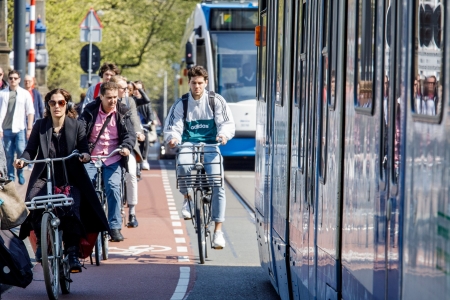In 2010-2019, the police registered an average annual number of 22 road deaths in crashes with public transport. In number of registered casualties, public transport crashes compare favourably to private transport crashes. This can be read in the SWOV fact sheet Public transport and level crossings.
This fact sheet describes the road safety aspects of public transport and of level crossings – places where road and rail networks intersect. Public transport vehicles comprise buses, trams, light rail vehicles and trains. This fact sheet relates to road casualties involving a public transport vehicle: suicide and casualties caused by a lack of social safety (violence in public transport) are not discussed. Apart from public transport and level crossings, the road safety of taxis is also addressed.
The actual number of public transport casualties is unknown, since the number of road deaths for each vehicle category (bus, train, tram/light rail) is not registered separately (by Statistics Netherlands). The registered public transport crashes mainly involve crash opponents and much less often occupants of the public transport vehicles themselves. In 2010-2019, the police registered an average annual number of 21.2 road deaths in crashes with a bus, tram or train and only 0.6 road deaths in a bus, tram or train. Casualties among crash opponents mostly concern vulnerable road users (pedestrians, cyclists or (light) moped riders). To improve road safety of public transport several measures may be taken, such as infrastructural measures (safe layout of separate bus lanes and tram tracks, safe level crossings), proper maintenance of the public transport infrastructure, a more crashworthy design of bus, train, or tram fronts, or systems that facilitate emergency stops. For occupants, safety may be improved by a crashworthy interior.
A relatively large number of train crashes occur at unprotected crossings of passenger routes, where barriers or warning lights are missing. Before 2028, ProRail aims to abolish all unprotected crossings by protecting them, turning them into split-level crossings or making them inaccessible to the public. To improve safety around the railway tracks, rules concerning hazardous road user behaviour are enforced by a.o. use of smart cameras.
Since not much recent research about public transport safety is available, we sometimes had to revert to somewhat older studies. The transition toward self-driving cars may have consequences for public transport safety; for example when self-driving shuttles take over some of the public transport routes.

